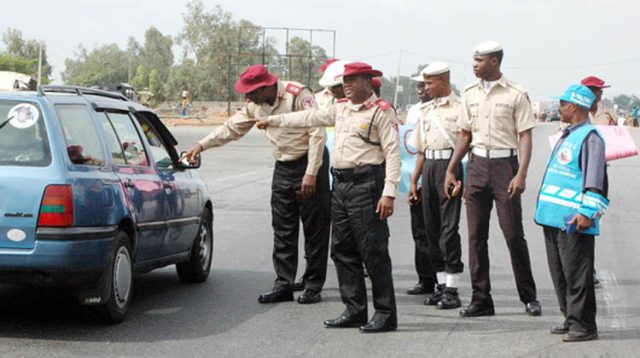Nigeria has continued to witness a troubling rise in fatalities from road traffic crashes, as recent data show a deepening crisis on the country’s highways.
The first quarter of the year was marked by several tragic incidents. Nigerians wake up daily to disturbing reports of truck containers tragically dropping on passenger buses, cars and pedestrians on the roadside.
More than ever, fuel tankers are crushing innocent people to death or igniting fires that claim scores of lives, consuming vehicles, buildings and other goods.
From January to March 2025 (Q1), the Federal Road Safety Corps (FRSC) said Nigeria recorded 2,650 crashes, resulting in 1,593 deaths and 9,298 injuries.
Compared to the same period in 2024, the number of fatalities rose by 8.3 per cent, signalling an increase in the severity of the accidents. Injuries also jumped by 7.4 per cent within the same period.
Among the most deadly corridors was the Jos–Lafia–Makurdi route, where 1,539 lives were lost in the first three – a chilling reflection of the high-risk nature of certain highways.On January 11, in Plateau State, a bus crash left 19 dead and 11 injured. On January 22 (in Ilorin, Kwara), a trailer-truck collision claimed 18 lives.
On February 1, along Ore–Lagos Road, Ondo state, two buses collided and were burnt, killing 30 people. Also in Kano, on February 14, a collision between a trailer and a goods vehicle killed 23 and injured 48.
While full data for April to June (Q2) has yet to be released by the FRSC, early signs suggest no improvement. A few examples will suffice. On April 19, on Ife-Ilesa Road, Osun State, a collision between a trailer and a Toyota Hilux killed five people, including a child.
On May 5, along the Abuja-Lokoja highway (Gada Biyu), a Peugeot bus tyre burst, plunging into a ditch and killing one person, while six people were injured.
On June 1, along the Kano Zaria Expressway (Chiromawa Bridge), a bus veered off the bridge, killing 22 athletes.On June 7, Kyaramma, in Jigawa state, a head-on collision between two Golf cars resulted in the death of nine.
Five people died and several others were injured in an accident on the Lagos-Ibadan Expressway (Soka area) involving trucks and cars. In July, within just 48 hours between July 5 and 6, a total of 39 lives were lost in three separate crashes in Kano, Lagos and Ogun states.
On the Zaria–Kano highway, 21 people were killed when a Toyota Hummer bus driving against traffic collided head-on with a trailer.In Ogun state, 10 lives were lost on the Ijebu Ode–Obada Expressway due to wrong overtaking. In Lagos, eight people died in a crash on the Mile 2–Badagry Expressway as a result of speeding.
Most of the crashes were linked to human errors– wrong-way driving, reckless overtaking and speeding. The repeated patterns are some of the issues the FRSC was set up to address.
Poor road infrastructure and insecurity are other causes of accidents on the highways. Technical Director, Safety Beyond Borders, Patrick Adenusi, in a telephone chat on Wednesday, identified the major causes of accidents to include tanker overloading, use of alcohol and other dangerous drugs as well as non-adherence to stipulated loading standards by oil marketing companies.
According to him, the poor condition of the highways, coupled with a lack of road signage and fatigue suffered by drivers as a result of long driving time, are also responsible for carnage on highways.
Many roads remain in a state of disrepair, forcing drivers into dangerous detours or risky manoeuvres to make up for lost time caused by potholes or bandit-infested routes.
As Nigerians await the FRSC to release the second quarter statistics on road crashes by late this month or early August, safety advocates are already warning of a potential surge in fatalities, especially owing to the effect of the rainy season when roads deteriorate and visibility worsens.
They have called for stricter enforcement of traffic regulations, community-level awareness campaigns on safe driving, immediate repair of damaged roads, mandatory refresher training for commercial drivers, among other measures.





